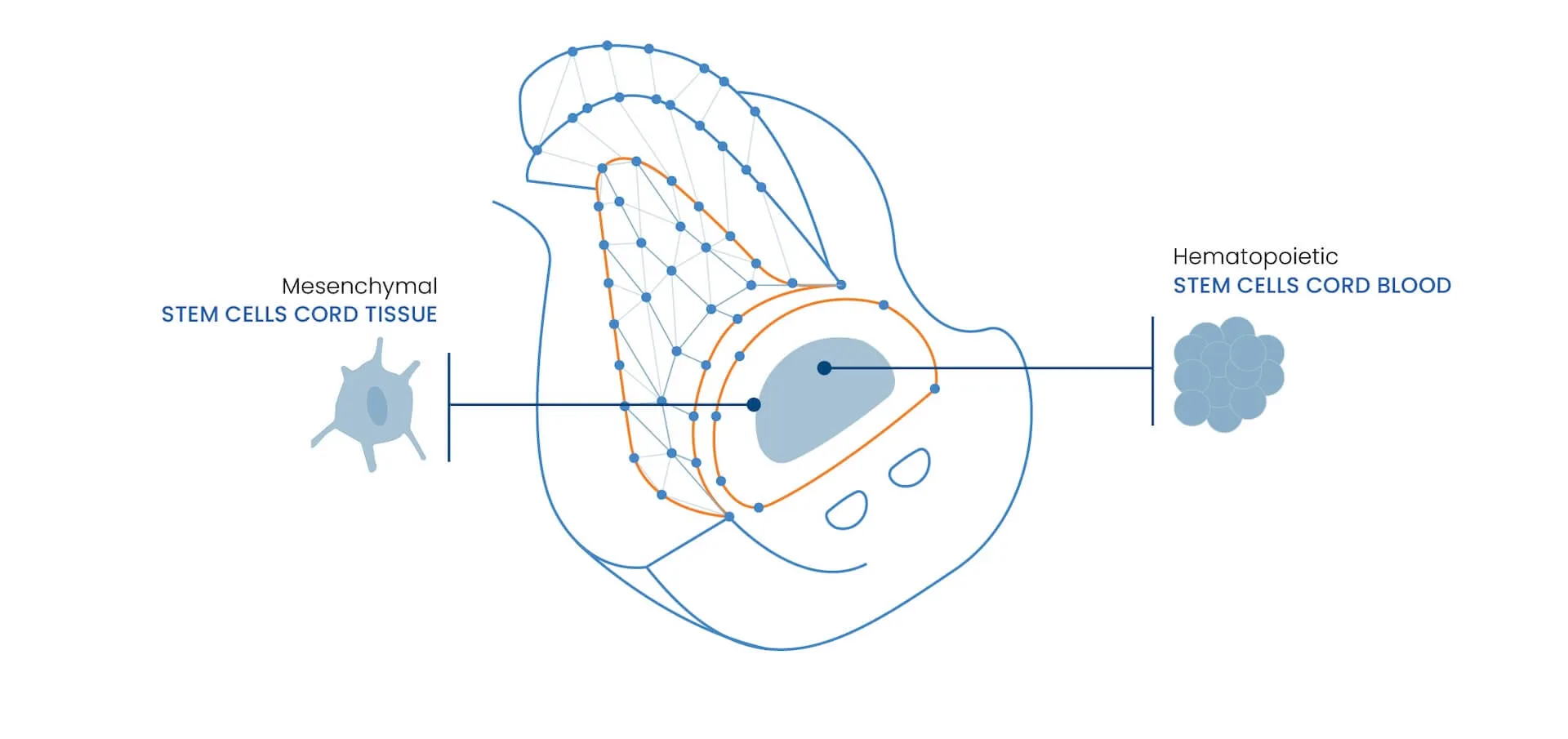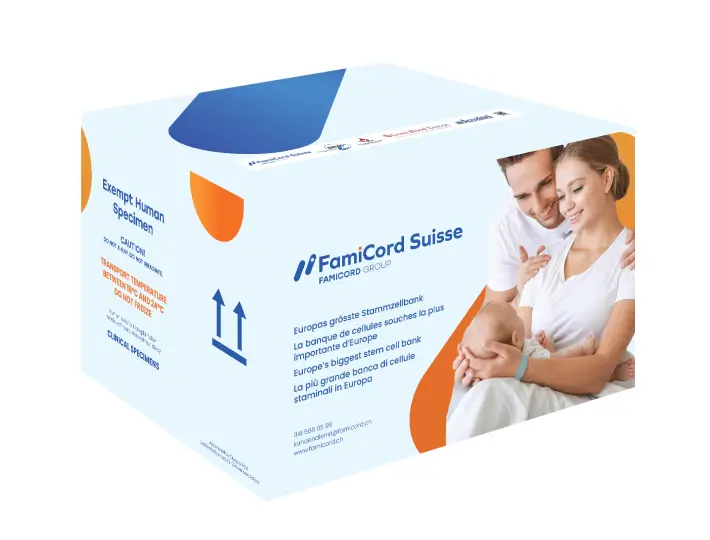Stem cells
Types
What are stem cells?
Stem cells are primary, non-specialised cells that have enormous reproductive potential and the ability to transform into specialised cells. Thanks to these properties, they are used in medicine to restore damaged cells.
Where can stem cells be found?
Stem cells are found in various parts of the body (including the umbilical cord blood, the umbilical cord itself and the placenta). The special feature of these stem cells is that they are young and free from environmental influences and thus have a high regenerative capacity. They can only be harvested and stored during birth.




